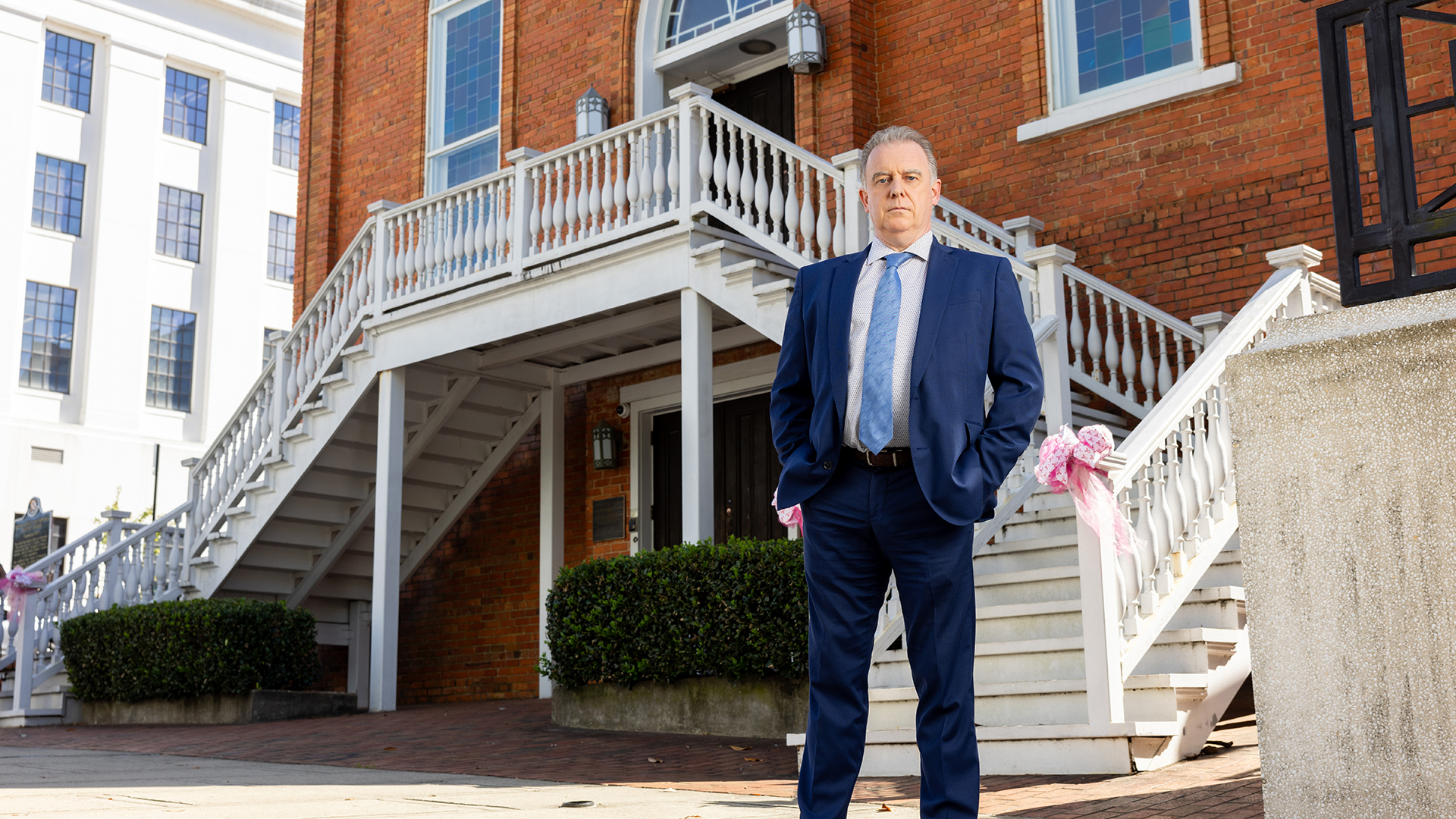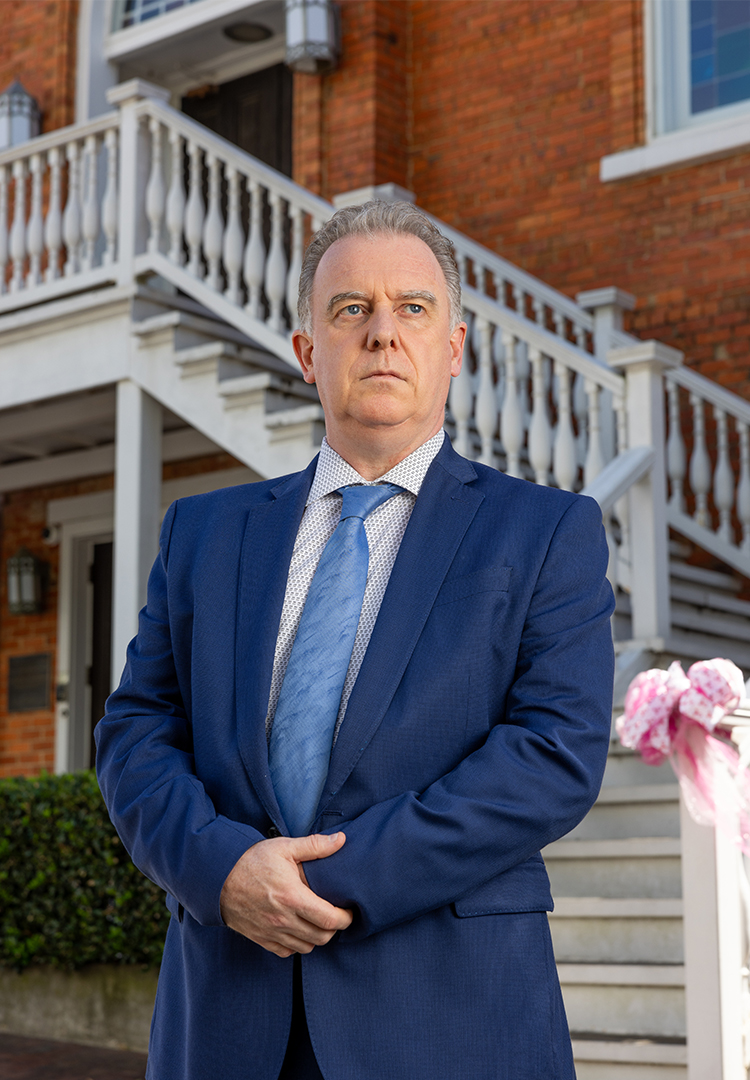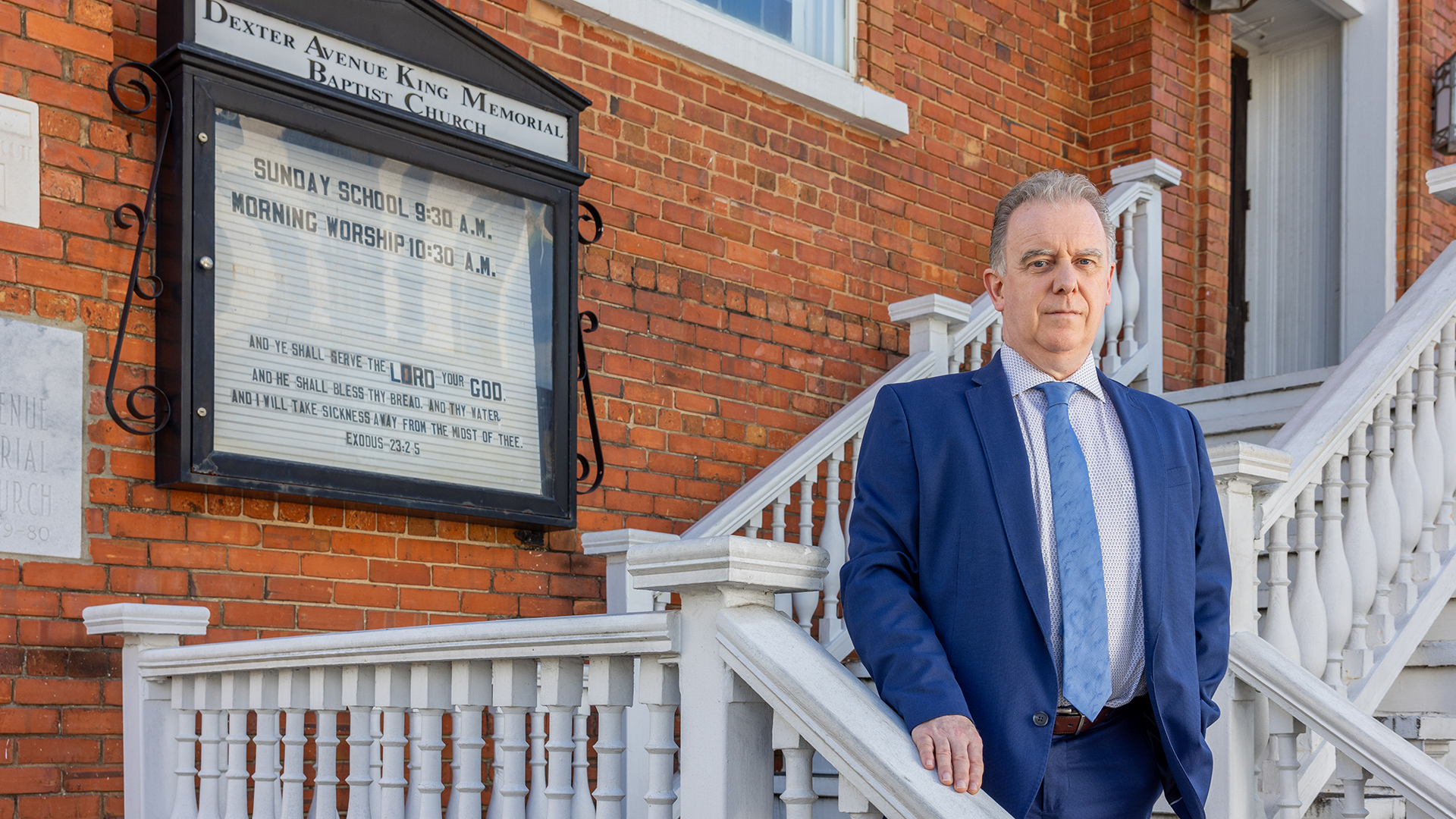
Photography by Lynsey Weatherspoon
One day, heritage experts will vote whether to inscribe the church where Martin Luther King Jr preached in Montgomery, Alabama as a UNESCO World Heritage Site.
For the leadership of this small but historic state capital in the American South, the idea that a modest house of worship could have the same international stature as the Pyramids of Giza or the Great Wall of China is a source of immense civic pride.
When that day comes, an unlikely champion will have played a part: Scottish surveyor Warren Adams MRICS.
Since April, Adams has been the land use control administrator for the City of Montgomery, a position he has quickly leveraged to jumpstart heritage preservation in this Southern burg that’s on the rise. He has brought a career’s worth of experience to a city rich with complicated history but also primed for growth.
It’s a job that allows Adams to redress historical wrongs, protect heritage neighbourhoods without displacing residents and positively shape new development. It represents a capstone on a varied career that’s taken Adams from Glasgow tenements to Miami high-rises and now the birthplace of the Civil Rights Movement.
“To find myself in this position where I can actively contribute to what many people say is one of the most historic cities in the country, and possibly the world, is something that I’ve worked for since a young age,” says Adams.
Saltire upbringing
Adams was born in New Jersey, but his Scottish parents soon moved back to their homeland. Although a US citizen since birth, Adams had a resolutely Scottish upbringing.
Growing up in Scotland meant exposure to heritage buildings from a young age. Adams still recalls learning about classical architecture in a Paisley primary school, and admiring the architecture of his secondary school, built in 1898. A neighbourhood walk with his grandparents yielded a veritable encyclopedia of historic structures, from buildings to streetlights. His father introduced him to the construction field in his teenage years when he tagged along on work sites during school holidays. Adams learned the basics of electrical, plumbing and roofing as he helped his father’s employer modernise turn-of-the-20th-century three and four-storey tenements across Glasgow, Edinburgh and Linlithgow.
“Everything seemed to be so solidly built of natural wood and stone,” he says. “I loved the overall feeling when you walked into one of these buildings in poor condition, and at the end of the job you saw how it had been transformed while still retaining its character.”
Adams completed the construction management course at the Glasgow College of Building and Printing, but became more interested in property development and valuation. He worked full-time as a valuer and studied part-time, graduating in 1995 with a BSc in land economics from the University of Paisley, now the University of West Scotland. He received his RICS accreditation in 1996 and pursued a career as a valuation surveyor.

“To find myself in this position … is something that I’ve worked for since a young age” Warren Adams MRICS, City of Montgomery
Drastic change
Something about old buildings kept calling him back. He was always more enthusiastic when a surveying job involved a heritage structure. Could he make that aspect his primary focus?
In 1999, Adams resolved to make a career change. He quit his valuation job, sold his flat and enrolled at the University of York to study historic building conservation. With those new credentials, he worked for Historic Scotland, the Strathclyde Building Preservation Trust and North Somerset Council.
While his first historic preservation job as a project manager for a building archaeologist paid a quarter of his prior valuation job, he was more fulfilled. “I made this very drastic change,” he says. “It was something I felt I had to do.”
Changing careers wasn’t the only drastic change Adams contemplated. With a US passport in his back pocket, he had always dreamed of moving across the pond. “It would have been a huge waste if I didn’t at least try it,” he says.
Love forced his hand in 2004 when he met his future wife, a Texan. He fired off job applications, landing his first interview in Delray Beach, Florida. They offered him the job of preservation planner on the spot.
“I had just left Scotland two weeks before and I was sitting on the beach in October,” he says. “I thought: This seems like a great place to be.”
Adams began a new life in a much newer part of the world, at least from a built environment perspective. For nearly 20 years, he mastered heritage preservation and a suite of related skills in planning and zoning through jobs across South Florida. One highlight was a successful ground lease negotiation in 2008 to move the Annie Beck House, a century-old craftsman-style bungalow, miles through Fort Lauderdale and into a public park. During this time, he also earned his RICS accreditation in building conservation in 2013.
Property development exerts intense pressure on local government in this booming region. In one notable instance when Adams served as historical resources and cultural arts director for the City of Coral Gables, an affluent municipality on the outskirts of Miami, a citizen sought to landmark a garden on a parcel poised for redevelopment in 2022.
Albert Menendez, then chair of the city’s historic preservation board, saw Adams’ professionalism, personal touch and evenhandedness at work. He noted how the experienced preservationist walked the petitioner through the landmark application process, right down to hand-delivering letters to her concerning the application. The property developer was against the possible historic designation and the eventual public hearing was a contentious, standing room only affair that lasted three-and-a-half hours. Adams ultimately recommended that the board deny the landmark request on meticulously detailed grounds.
“He shined as a peacemaker and a mediator,” Menendez says. “Nobody could say anything bad about Warren.”

“His staff are always in his office and he is always eager to share knowledge” Desmond Wilson, City of Montgomery
Sweet home Alabama
After two decades, Adams tired of the South Florida grind where historic properties were frequently making way for taller, denser building stock. “All I was doing was attending meetings for 10 different boards and reviewing alterations to historic properties,” he says. “I wanted to use all my skills.”
That opportunity arose in Montgomery, a city primed for growth as investors looked for smaller, less developed alternatives to coastal areas like South Florida. In 2022, Montgomery saw a record $1.7bn (£1.4bn) in private sector investment as carmaker Hyundai and beverage company Diageo grew their footprint.
At the same time, Montgomery benefits from graceful antebellum (pre-dating the US Civil War) architecture, a flagship university and the seat of state government, all anchoring a metropolitan area of less than 400,000 people.
“It has everything a successful city needs,” Adams says of what drew him.
Montgomery is also representative of the most wrenching throughlines in US history. The city served as a receiving port and auction block for enslaved Africans and their descendants. The Confederate States of America established their first capital in Montgomery. After the Civil War, the Jim Crow era of racial terror –lynchings and legally enforced apartheid between black and white residents –reigned for decades. The Civil Rights Movement, which was partially born in Montgomery under the leadership of a young Martin Luther King, Jr, chipped away at the edifice of segregation.
All this history is unvarnished in Montgomery. “The hard truth is there for the public to see,” Adams says. The crux is how to manage it.
To that end, Adams has rolled up his sleeves since landing in Montgomery on key preservation priorities like the Selma to Montgomery National Historic Trail and the Dexter Avenue King Memorial Baptist Church. But preservation amid such fraught history is not a simple matter, especially in the contemporary context of civic issues like a lack of affordable housing, a large inventory of vacant parcels and high crime rates. He is also helping the city rewrite its zoning and land use codes ahead of expected growth.
That wealth of experience and eagerness to embrace a broad portfolio has brought Adams high praise in city hall. “Warren was a gift,” says city economic development director Desmond Wilson. “He has gelled within the department but also with the mayor’s office and city council. His staff are always in his office and he is always eager to share knowledge.”
In addition to being the new guy in town, Adams’ Scottish credentials also turns heads. “When you’re in the South, you get the southern drawl,” says Wilson. “His accent brings a little flavour to the office. You know when Warren is in the room.”
That foreign background has helped re-energise Montgomery’s historic preservation work. “Sometimes it takes an outsider to bring a perspective from somewhere else,” Wilson says. “We hear so much about the Civil Rights Movement that we can get immune to it.”
Adams brings a fresh curiosity and a willingness to build relationships across the civic establishment, from state government officials to university historians to African-American clergy and parishioners.
“The sincerity of the effort is sometimes questioned with white outsiders,” Wilson says. “He has done a really good job breaking down the walls.”
The World Heritage designation for the Dexter Avenue King Memorial Baptist Church is a case in point. “For him to have gotten as far as he has as fast as he has is testament that they believe what he says and they trust him,” Wilson says.
And how would a younger Adams renovating a Glasgow tenement have viewed this turn of events? “That young man would be incredibly happy with the way things turned out,” Adams says.

